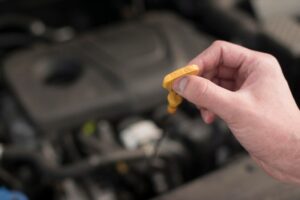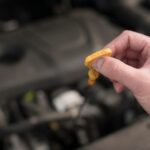Sprinters are popular and versatile vehicles, widely used for both commercial and personal purposes. However, like any vehicle, they can experience various issues over time. This guide will explore the most common problems faced by Sprinter owners, offering insights into their causes, symptoms, and potential solutions. Whether you’re a current Sprinter owner or considering purchasing one, this information will help you understand and address these issues effectively.
Sprinters manufactured by Mercedes-Benz, have become synonymous with reliability and versatility in the commercial vehicle sector. These vans are known for their spacious interiors, fuel efficiency, and robust build quality.
Understanding common issues can help owners maintain their Sprinters more effectively, potentially saving time and money on repairs.
Common Issues in Mercedes-Benz Sprinters: You Need to Know
Here are the common issues found in Mercedes-Benz Sprinters, along with tips on how to identify and prevent them.
1. Engine-Related Issues
The engine is the heart of any vehicle, and Sprinters are no exception. Several engine-related problems can occur, each with its own set of symptoms and causes.
Blue Smoke from Exhaust
One of the most noticeable issues is blue smoke coming from the exhaust. This problem is often accompanied by increased oil consumption and the engine running rough or misfiring. The primary causes of blue smoke include:
- Worn valve seals
- Damaged piston rings
- Cylinder wall wear
To address this issue, you may need to replace valve seals or, in more severe cases, rebuild or replace the engine if piston rings or cylinder walls are significantly damaged. Regular oil changes and using the correct oil grade can help prevent this problem from occurring.
Black Smoke from Exhaust
Another exhaust-related issue is the emission of dense black smoke. This problem is typically associated with reduced fuel efficiency and loss of engine power. The main culprits behind black smoke are:
- Clogged air filter
- Faulty fuel injectors
- Incorrect fuel-to-air ratio
Resolving this issue often involves replacing the air filter regularly, cleaning or replacing fuel injectors, and adjusting the fuel-to-air ratio, which usually requires professional diagnosis.
Oil Leaks
Oil leaks are a common problem in many vehicles, including Sprinters. Signs of an oil leak include oil spots under the vehicle, a burning oil smell, and low oil levels despite recent oil changes. The primary causes of oil leaks in Sprinters are:
- Worn gaskets or seals
- Cracked oil pan
- Loose oil filter
To fix oil leaks, you may need to replace damaged gaskets or seals, repair or replace the oil pan, or ensure proper installation of the oil filter during oil changes.
Turbocharger Problems
Turbocharger issues can significantly impact your Sprinter’s performance. Symptoms include loss of power (especially during acceleration), excessive exhaust smoke, and a whistling or whining noise from the engine bay. The main causes of turbocharger problems are:
- Worn turbocharger bearings
- Oil contamination in the turbocharger
- Damaged turbocharger impeller
Addressing turbocharger issues often requires replacing the turbocharger itself. To prevent these problems, ensure regular oil changes to avoid oil contamination and address any oil leaks promptly to protect the turbocharger.
2. Transmission Problems
The transmission is crucial for transferring power from the engine to the wheels. Sprinters can experience several transmission-related issues that affect the vehicle’s performance and drivability.
Transmission Fluid Leaks
Transmission fluid leaks can lead to serious problems if not addressed promptly. Signs of a leak include red or brown fluid spots under the vehicle, difficulty shifting gears, and a burning smell while driving. The main causes of transmission fluid leaks are:
- Worn transmission seals
- Damaged transmission pan
- Loose transmission fluid lines
To resolve these issues, you may need to replace worn seals, repair or replace the transmission pan, or tighten or replace fluid lines. Regular transmission fluid checks and changes can help prevent leaks from occurring.
Gear Shifting Issues
Problems with gear shifting can make driving your Sprinter a challenging experience. Symptoms include delayed or rough gear shifts, failure to engage certain gears, and slipping out of gear while driving. The primary causes of gear shifting issues are:
- Low transmission fluid
- Worn clutch (in manual transmissions)
- Faulty transmission control module
Solutions may involve checking and topping up transmission fluid, replacing the clutch if necessary, or diagnosing and repairing or replacing the transmission control module.
Transmission Overheating
Transmission overheating can cause significant damage if not addressed quickly. Signs of this problem include a transmission warning light on the dashboard, a burning smell, and erratic shifting behavior. The main causes of transmission overheating are:
- Low transmission fluid
- Towing beyond vehicle capacity
- Faulty transmission cooler
To prevent transmission overheating, maintain proper transmission fluid levels, adhere to recommended towing limits, and repair or replace the transmission cooler if necessary.
3. Electrical System Issues
Modern Sprinters rely heavily on their electrical systems for various functions. Electrical problems can range from minor inconveniences to major issues that affect the vehicle’s operation.
Battery Drain
Battery drain is a common electrical issue in Sprinters. Symptoms include the vehicle not starting after sitting for a period, dimming headlights or interior lights, and electrical components behaving erratically. The primary causes of battery drain are:
- Faulty alternator
- Parasitic drain from aftermarket accessories
- Old or damaged battery
To address battery drain, you may need to test and replace the alternator if necessary, identify and address any parasitic drains, or replace the battery if it’s old or damaged.
Alternator Failure
Alternator problems can leave you stranded if not addressed promptly. Signs of alternator failure include the battery warning light on the dashboard, dimming or flickering lights, and the vehicle stalling while driving. The main causes of alternator failure are:
- Worn alternator bearings
- Damaged alternator diodes
- Broken alternator belt
Resolving alternator issues typically involves replacing the alternator or repairing or replacing the alternator belt. Regular alternator belt checks can help prevent sudden failures.
Faulty Sensors
Sensor problems can affect your Sprinter’s performance and fuel efficiency. Symptoms include an illuminated check engine light, erratic engine performance, and poor fuel economy. Common sensor issues involve:
- Oxygen sensor failure
- Mass airflow sensor malfunction
- Crankshaft position sensor issues
Addressing sensor problems usually requires diagnosing and replacing faulty sensors or cleaning sensors if contamination is the issue. Regular maintenance can help prevent sensor failures.
4. Suspension and Steering Problems
The suspension and steering systems are crucial for a smooth and safe ride. Issues in these areas can affect your Sprinter’s handling and comfort.
Worn Ball Joints
Ball joint wear is a common suspension issue in Sprinters. Signs of worn ball joints include clunking noises when going over bumps, uneven tire wear, and loose or wandering steering. The primary causes of ball joint wear are:
- Normal wear and tear
- Exposure to harsh road conditions
- Lack of lubrication
To address worn ball joints, replacement is typically necessary. Regular inspection and lubrication can extend ball joint life, and addressing any alignment issues promptly can help prevent premature wear.
Steering Rack Issues
Problems with the steering rack can make your Sprinter difficult to control. Symptoms include stiff or difficult steering, leaking power steering fluid, and grinding noises when turning. The main causes of steering rack issues are:
- Worn steering rack seals
- Low power steering fluid
- Damaged steering rack components
Resolving steering rack problems may involve replacing steering rack seals, checking and maintaining proper power steering fluid levels, or in severe cases, replacing the entire steering rack.
Shock Absorber Wear
Worn shock absorbers can significantly affect your Sprinter’s ride quality and handling. Signs of shock absorber wear include a bouncy or unstable ride, vehicle nose-diving when braking, and uneven tire wear. The primary causes of shock absorber wear are:
- Normal wear over time
- Driving on rough roads
- Overloading the vehicle
To address shock absorber wear, replacement is typically necessary. Consider upgrading to heavy-duty shocks for frequent heavy loads, and regular inspections can help identify wear before it becomes severe.
5. Brake System Concerns
A properly functioning brake system is critical for safety. Sprinters can experience several brake-related issues that require attention.
Brake Pad Wear
Brake pad wear is a normal occurrence but needs to be addressed promptly. Symptoms include squealing or grinding noises when braking, reduced braking performance, and the brake warning light on the dashboard. The main causes of brake pad wear are:
- Normal wear from regular use
- Aggressive driving habits
- Using low-quality brake pads
To resolve brake pad wear, replacement is necessary. Consider upgrading to higher quality pads for improved performance and longevity, and regular brake inspections can help catch wear early.
Brake Rotor Warping
Warped brake rotors can affect your Sprinter’s braking performance and comfort. Signs of warped rotors include a pulsating brake pedal, vibration in the steering wheel when braking, and uneven braking performance. The primary causes of rotor warping are:
- Overheating from excessive braking
- Uneven torquing of wheel lug nuts
- Poor quality or worn rotors
Addressing warped rotors may involve resurfacing if the warping is minor, or replacement for severely warped rotors. Ensure proper installation and torquing of wheels to prevent this issue.
ABS System Malfunctions
Problems with the Anti-lock Braking System (ABS) can compromise your Sprinter’s safety. Symptoms include the ABS warning light on the dashboard, unusual behavior of the brake pedal during hard braking, and loss of ABS functionality. The main causes of ABS malfunctions are:
- Faulty ABS sensors
- Damaged ABS control module
- Low brake fluid
Resolving ABS issues may require replacing faulty ABS sensors, repairing or replacing the ABS control module, or maintaining proper brake fluid levels.
6. Fuel System Issues
The fuel system is crucial for delivering the right amount of fuel to the engine. Sprinters can experience several fuel system problems that affect performance and efficiency.
Fuel Injector Problems
Fuel injector issues can significantly impact your Sprinter’s performance. Signs of fuel injector problems include engine misfires, poor fuel economy, and rough idling. The primary causes of fuel injector issues are:
- Clogged injectors
- Worn injector seals
- Electrical issues with injector solenoids
Addressing fuel injector problems may involve cleaning clogged injectors, replacing worn injector seals, or in severe cases, replacing faulty injectors.
Fuel Pump Failure
A failing fuel pump can leave you stranded. Symptoms include engine sputtering or stalling, difficulty starting the vehicle, and loss of power under acceleration. The main causes of fuel pump failure are:
- Running the vehicle with very low fuel levels
- Contaminated fuel
- Normal wear over time
To resolve fuel pump issues, replacement is typically necessary. Avoid running the vehicle with less than a quarter tank of fuel and use quality fuel to prevent premature failure.
Clogged Fuel Filters
A clogged fuel filter can restrict fuel flow and affect engine performance. Signs of a clogged fuel filter include reduced engine performance, difficulty starting the engine, and stalling under load. The primary causes of clogged fuel filters are:
- Normal accumulation of contaminants
- Poor quality fuel
- Extended intervals between filter changes
To address clogged fuel filters, replacement according to the manufacturer’s schedule is necessary. Use high-quality fuel and consider more frequent filter changes if operating in dusty environments.
7. Body and Interior Problems
While often overlooked, issues with the body and interior can significantly impact the comfort and functionality of a Sprinter.
Rust and Corrosion
Rust and corrosion can compromise your Sprinter’s structural integrity and appearance. Signs include visible rust spots on the body, paint bubbling or flaking, and weakened structural components. The main causes of rust and corrosion are:
- Exposure to road salt and moisture
- Stone chips or paint damage
- Poor drainage in body panels
To address rust and corrosion, treat rust spots early with proper treatment and painting. Regularly wash and wax the vehicle, especially in winter, and consider applying undercoating for additional protection.
Door Lock Malfunctions
Door lock issues can be both inconvenient and a security concern. Symptoms include doors not locking or unlocking properly, key fob not functioning, and intermittent central locking system operation. The primary causes of door lock malfunctions are:
- Worn lock mechanisms
- Electrical issues in the central locking system
- Damaged key fob
Resolving door lock problems may involve lubricating door lock mechanisms, repairing or replacing faulty central locking components, or replacing the key fob battery or the entire fob if necessary.
Climate Control Issues
Problems with the climate control system can make your Sprinter uncomfortable to drive. Signs of climate control issues include weak or no airflow from vents, inconsistent temperature control, and strange odors from the ventilation system. The main causes of climate control problems are:
- Clogged cabin air filter
- Faulty blower motor
- Refrigerant leaks in the AC system
To address climate control issues, replace the cabin air filter regularly, repair or replace the blower motor if necessary, and recharge the AC system and fix any leaks.
Maintenance Tips to Prevent Common Issues
Preventing issues is often easier and more cost-effective than fixing them. Here are some maintenance tips to help keep your Sprinter in top condition:
- Follow the manufacturer’s maintenance schedule
- Perform regular oil changes using the correct grade of oil
- Check fluid levels regularly, including engine oil, transmission fluid, coolant, and brake fluid
- Inspect belts and hoses for signs of wear, cracking, or looseness
- Rotate tires and check alignment to ensure even wear and prevent suspension issues
- Keep the vehicle clean, including regular washing of the undercarriage to prevent rust and corrosion
- Address small issues promptly to prevent more serious damage
- Use quality parts and fluids to improve reliability and longevity
- Monitor tire pressure for improved fuel efficiency and reduced wear on suspension components
- Keep a maintenance log to track service history and anticipate upcoming maintenance needs
Conclusion
Sprinters are reliable vehicles, but like all vehicles, they can encounter various issues over time. Common problems include engine, transmission, electrical, and suspension issues, along with brake and fuel system concerns.
Regular maintenance, early detection of problems, and timely repairs are key to keeping your Sprinter running smoothly. By following a proper maintenance schedule and addressing minor issues quickly, you can extend the lifespan of your vehicle and avoid costly repairs.
Maintaining your Sprinter properly ensures optimal performance and longevity for both commercial and personal use.











